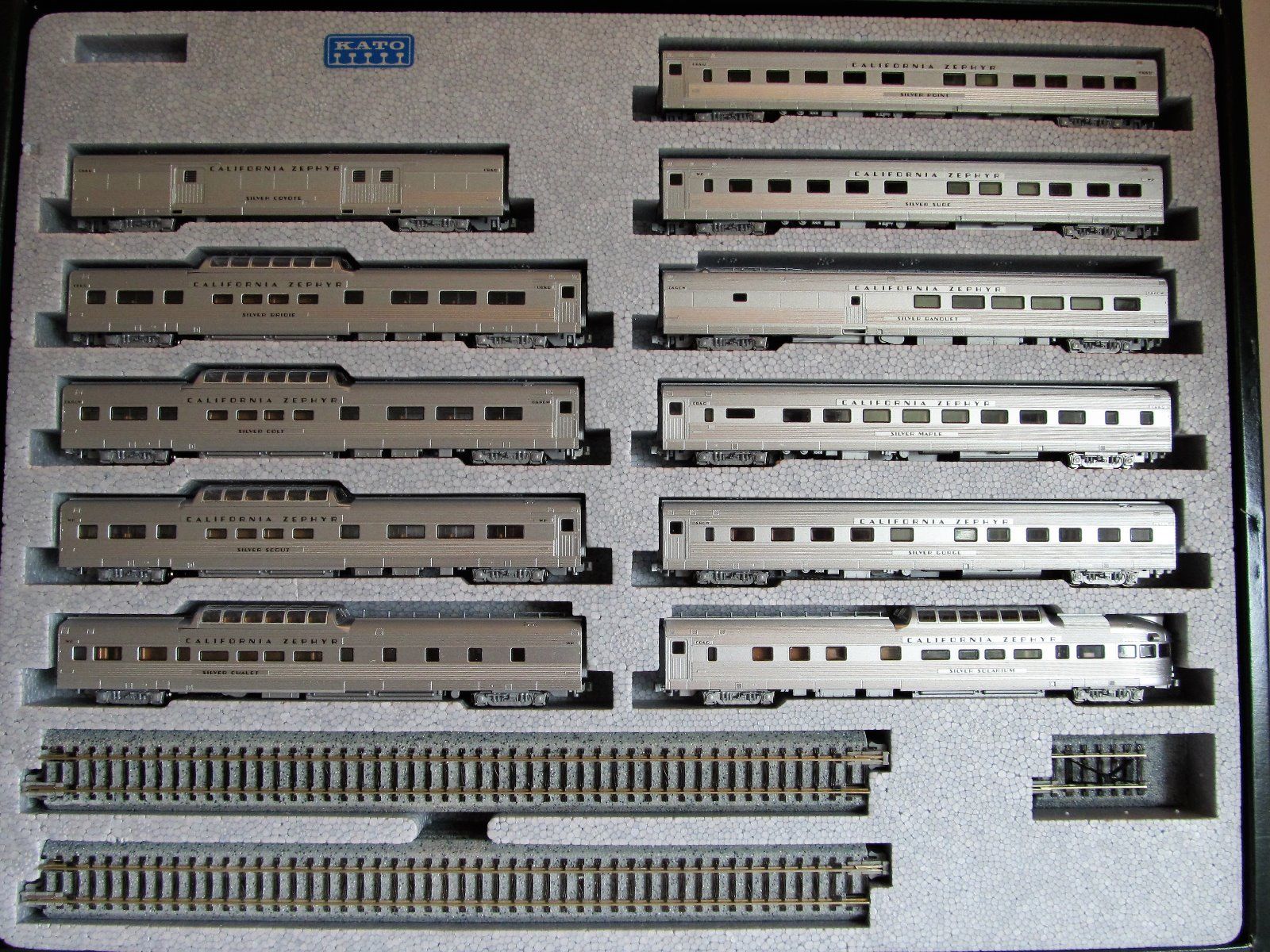Model Information: This model was announced in December of 2008 and first released in May of 2009. It is comparable in quality to the Micro-Trains fix-end 50 foot gondolas in quality of construction and model features. The features include: Prototypical scale height reflecting the new higher capacities standard; Fourteen side posts; Separate ladders; Detailed stirrups; Accurate painting and lettering. Of particular interest are the detailed ladders and stirrups which are more typical of a 3rd generation model. The truck-mounted couplers and plastic wheels, however, squarely put this model in the 2nd generation zone.
Prototype History: Introduced by Thrall Car Manufacturing Co., in 1995, with its new interior height of 5' 6" (i.e., a 6" increase in height over the previous standard), the firm's contemporary design for a 52' 6" length 2743 cubic foot capacity gondola car took advantage of a (then) newly allowed increase in Gross Rail Loading (GRL) of 286,000 lbs, which was up from the previous limit of 263,000 lbs.
Acquired by Trinity Industries (now TrinityRail) in 2001, from 1995 to 1999, Thrall produced over 6,700 of the 2743 gondolas.
The manufacture of the 2743 design was resumed by Trinity in 2005.
Acquired by Trinity Industries (now TrinityRail) in 2001, from 1995 to 1999, Thrall produced over 6,700 of the 2743 gondolas.
The manufacture of the 2743 design was resumed by Trinity in 2005.
Road Name History:  CRLE was the original reporting mark for just over 500 of these gondolas (CRLE 3000-3504). They were pretty widely dispersed after that, many to NS, and some to IMRL/ICE, CHTT, among others.
CRLE was the original reporting mark for just over 500 of these gondolas (CRLE 3000-3504). They were pretty widely dispersed after that, many to NS, and some to IMRL/ICE, CHTT, among others.
CHTT 286200-286249 are the ex-CRLE "gondola connection" cars you're referring to. Their AEI tags were prepared in July 1997, so they probably began to appear soon after that. These cars are ex-CRLE 3300-3349; observations support the probability that they were renumbered in order.

CHTT 286200-286249 are the ex-CRLE "gondola connection" cars you're referring to. Their AEI tags were prepared in July 1997, so they probably began to appear soon after that. These cars are ex-CRLE 3300-3349; observations support the probability that they were renumbered in order.
Brand/Importer Information: In 1924 Stephan Schaffan, Sr. founded the Atlas Tool Company in Newark, New Jersey. In 1933 his son, Stephan Schaffan, Jr., came to work for his father at the age of sixteen. Steve Jr. built model airplanes as a hobby and frequented a local hobby shop. Being an enterprising young man, he would often ask the owner if there was anything he could do to earn some extra spending money. Tired of listening to his requests, the hobby-store owner threw some model railroad track parts his way and said, "Here, see if you can improve on this".
In those days, railroad modelers had to assemble and build everything from scratch. Steve Jr. created a "switch kit" which sold so well, that the entire family worked on them in the basement at night, while doing business as usual in the machine shop during the day.
Subsequently, Steve Jr. engineered the stapling of rail to fiber track, along with inventing the first practical rail joiner and pre-assembled turnouts and flexible track. All of these products, and more, helped to popularize model railroading and assisted in the creation of a mass-market hobby. The budding entrepreneur quickly outgrew the limitations of a basement and small garage operation. Realizing they could actually make a living selling track and related products, Steve and his father had the first factory built in Hillside, New Jersey at 413 Florence Avenue in 1947. On September 30, 1949, the Atlas Tool Company was officially incorporated as a New Jersey company.
In 1985, Steve was honored posthumously for his inventions by the Model Railroad Industry Association and was inducted into the Model Railroad Industry Hall of Fame in Baltimore, Maryland. In addition, Steve was nominated and entered into the National Model Railroad Association Pioneers of Model Railroading in 1995.
In the early 1990s, the Atlas Tool Company changed its name to Atlas Model Railroad Company, Inc.
In those days, railroad modelers had to assemble and build everything from scratch. Steve Jr. created a "switch kit" which sold so well, that the entire family worked on them in the basement at night, while doing business as usual in the machine shop during the day.
Subsequently, Steve Jr. engineered the stapling of rail to fiber track, along with inventing the first practical rail joiner and pre-assembled turnouts and flexible track. All of these products, and more, helped to popularize model railroading and assisted in the creation of a mass-market hobby. The budding entrepreneur quickly outgrew the limitations of a basement and small garage operation. Realizing they could actually make a living selling track and related products, Steve and his father had the first factory built in Hillside, New Jersey at 413 Florence Avenue in 1947. On September 30, 1949, the Atlas Tool Company was officially incorporated as a New Jersey company.
In 1985, Steve was honored posthumously for his inventions by the Model Railroad Industry Association and was inducted into the Model Railroad Industry Hall of Fame in Baltimore, Maryland. In addition, Steve was nominated and entered into the National Model Railroad Association Pioneers of Model Railroading in 1995.
In the early 1990s, the Atlas Tool Company changed its name to Atlas Model Railroad Company, Inc.
Item created by: Steve German on 2016-04-16 12:12:29. Last edited by CNW400 on 2020-08-24 13:33:08
If you see errors or missing data in this entry, please feel free to log in and edit it. Anyone with a Gmail account can log in instantly.
If you see errors or missing data in this entry, please feel free to log in and edit it. Anyone with a Gmail account can log in instantly.










